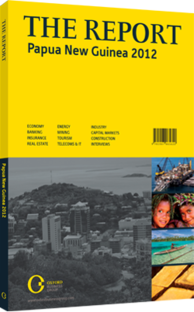OBG talks to Joseph Kintau, Managing Director, National Airports Corporation

Interview: Joseph Kintau
What specific initiatives are being pursued in 2012 to reduce overall costs of air transportation?
JOSEPH KINTAU: Gradual cost reduction in air travel has to happen though increased competition, as the government and its regulatory bodies are in no position to dictate costs. As more and more operations are launched in PNG’s aviation sector, the price of travel will start to fall. This process has already begun, and we are seeing new domestic entrants, operating both scheduled and charter flights. In terms of international travel, the high cost of carrying out operations in PNG is in itself a deterrent. Government initiatives are only part of the equation, as without the formation of a competitive environment, it will be difficult to bring costs down.
In terms of specific initiatives, government subsidies for transport infrastructure continues to play a critical role in maintaining a low-cost base of transportation for the industry, which will carry on for the foreseeable future. The successful completion of plans set out in the Medium-Term Development Programme (MTDP) 2011-15 will lay the foundations for improving and expanding air transport services that are safe, reliable, affordable and accessible to all citizens. We have identified three strategic areas for development, which, once completed, will see the establishment of an aviation network linking up all of PNG as well as the upgraded national airports that meet international safety and security standards. Rural airports will be rehabilitated to comply with basic operation standards as currently almost 95% of rural airstrips remain closed and out of use, while upgrades will be made to the country’s provincial airports, making it possible for larger aircraft to land there. Right now, only 15 airports conform to international safety standards and only one regional airport has the capacity for larger jet aircraft.
How much capital has been allocated by the authorities to airport development?
KINTAU: The government has received a $480m loan from the Asian Development Bank as part of its $640m plans to rehabilitate and redevelop airport infrastructure in PNG. According to the plans laid out in the MTDP, the government will invest around PGK2bn ($95.18m) of this to upgrade 22 national airports to bring them in line with international safety standards. The rehabilitation programme will be executed in three stages, with the first phase ending in 2015 and the final phase scheduled for completion by 2030. The programme will also include rehabilitating and upgrading all navigational aids, surveillance and communications systems at every one of the country’s national airports.
Long-term rehabilitation projects such as this carry many risks and challenges, so we must ensure it is efficiently implemented and that the government does not lose its focus on and commitment to the development plan. We must also try to access financing from international development organisations in case there are shortfalls in the funding.
What are the main constraints in rehabilitation and maintenance activities?
KINTAU: Finding adequate funding is the main issue due to the size of the country’s infrastructure compared to the size of the aviation industry. Commercially, the aviation industry is small, and infrastructure is being built primarily to provide access to the rural areas. Due to the country’s geography and topography, air travel is the only mode of transport that connects all regions in PNG to each other and, aside from maritime transportation, to the entire world. Commercial returns for operations are not that high due to the fact there is currently very little traffic and demand for air travel in the country. Therefore, the government will continue to subsidise the cost of the infrastructure. However, as a result of the PNG liquefied natural gas project and increased economic activity, as well as the emergence of the middle class and higher disposable income, we have seen a gradual increase in passenger numbers both locally and internationally.
You have reached the limit of premium articles you can view for free.
Choose from the options below to purchase print or digital editions of our Reports. You can also purchase a website subscription giving you unlimited access to all of our Reports online for 12 months.
If you have already purchased this Report or have a website subscription, please login to continue.

